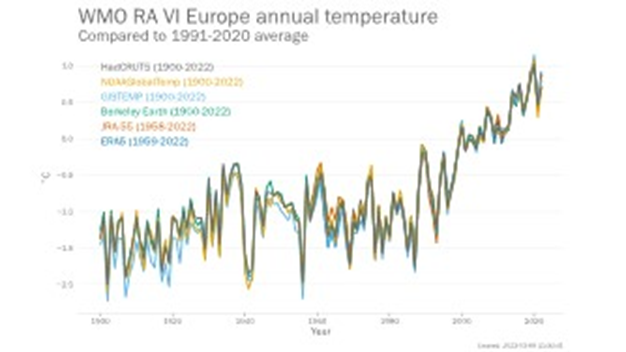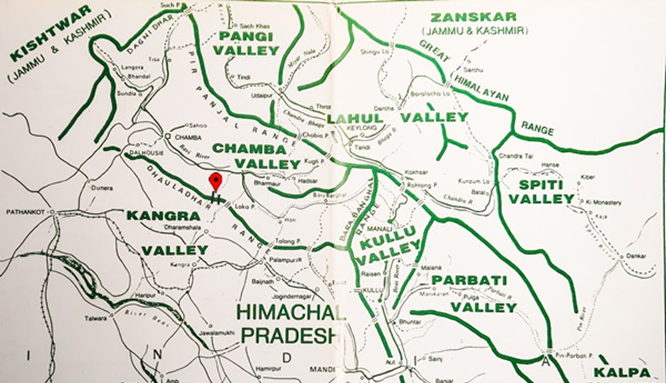Friday, 23rd June 2023
ICIMOD - HI-WISE report. - Edukemy Current Affairs
In News: Rivers in the Eastern Himalayas get less water from glacial melt; Still, the perennial nature of several rivers could be lost, say experts.
About
A recent report by the International Centre for Integrated Mountain Development (ICIMOD) has unveiled alarming findings about the state of rivers in East-Northeast India. The report underscores the urgent need for immediate action to protect the delicate river ecosystems and the communities that depend on them.
Climate Change Exacerbates Threats to Rivers
- The ICIMOD report highlights the profound impact of climate change on the region's rivers.
- Increasing temperatures, unpredictable rainfall patterns, and the melting of glaciers have led to reduced water flows, frequent droughts, and extreme weather events.
- These environmental shifts are significantly disrupting the delicate balance of river systems, posing severe challenges for agriculture, hydropower generation, and domestic water supply.
Human Activities Aggravate River Degradation:
- Report also emphasizes the detrimental role played by human activities in exacerbating the degradation of rivers in East-Northeast India.
- Uncontrolled urbanization, rapid industrial expansion, and rampant deforestation have significantly contributed to the problem. Irresponsible sand mining, unregulated dam construction, and pollution from industrial and residential sources further strain the already vulnerable river ecosystems.
- The consequences are not only the loss of aquatic biodiversity but also the endangerment of livelihoods reliant on fishing and agriculture.
Urgent Measures for River Conservation:
- To protect the rivers of East-Northeast India, the ICIMOD report underscores the necessity for immediate and concerted efforts.
- It emphasizes the implementation of robust policies and regulations to mitigate the impacts of climate change and prevent further deterioration of river ecosystems.
- Strengthening river basin management, promoting sustainable land use practices, and adopting water-efficient technologies are key measures recommended to safeguard these invaluable water resources.
Community Participation and Traditional Knowledge
- The report stresses the importance of engaging local communities, including indigenous groups, in river conservation endeavors.
- These communities possess invaluable traditional knowledge and practices that can contribute to the sustainable management of rivers.
- Recognizing their rights and empowering them in decision-making processes will be instrumental in ensuring the long-term resilience of both the rivers and the communities that depend on them.
A Call for Collaborative Action
- The ICIMOD report serves as a call to action for governments, policymakers, and stakeholders to prioritize the preservation and restoration of rivers in East-Northeast India.
- It emphasizes the urgent need for collaborative efforts at regional, national, and local levels to tackle the multifaceted challenges posed by climate change and unsustainable human activities.
- Failing to act promptly could result in irreversible damage to the region's river ecosystems and the socio-economic well-being of millions of people.
ICIMOD report underscores the critical importance of protecting and conserving the rivers of East-Northeast India. Preserving these invaluable water resources is not only vital for maintaining diverse ecosystems but also for sustaining the livelihoods of communities dependent on them. By taking immediate and comprehensive action, we can work towards securing a sustainable and prosperous future for both the rivers and the people who rely on them.
https://www.downtoearth.org.in/news/climate-change/icimod-report-rings-warning-bells-for-rivers-of-east-northeast-india-90154
New Global Financing Pact - Edukemy Current Affairs
In News: World leaders and finance moguls are gathering in Paris for the Summit for a New Global Financing Pact, which is being hosted by France with India, co-chairing the steering committee.
About the New Global Financing Pact:
- It is a proposed pact aimed at addressing the financing needs of sustainable development and climate action.
- There is a need of additional $4 trillion every year to meet the UN Sustainable Development Goals, COP21 and Biodiversity COP15 objectives. However only $204 billion official development assistance was collected in 2022-23.
- Only 25% of global climate investment goes to South Asia, Latin America, and Africa, which house some of the most vulnerable regions.
- Other challenges like conditional disbursal of money, high domestic taxes, illicit finance flows, and higher risk perceptions lead to lack of funds to undertake developmental projects in a sustainable manner.
Components of New Global Financing Pact:
- Pact: There is a need to create a pact for global flows of finance that covers two levels of social contracts domestic and international.
- At the domestic level, high debt limits the fiscal space of developing countries. There is a need to standardise existing tax structures, stop illegal cross-border money movement, and curbing ineffectual fossil fuel subsidies to increase the fiscal space.
- At the international level, finance is needed for adaptation as well as loss and damage stemming from climate change. Therefore, the international social contract must rest on a strong foundation of global solidarity.
- Platform: A platform to de-risk finance and attract private investment in sustainable infrastructure
- Vulnerable countries need several types of blended finance such as a Global Clean Investment Risk Mitigation Mechanism that pools risks across geographies and lower costs for all.
- Hedging against currency fluctuation should be done to prevent an increase in cost of finance.
- Pathway: A political pathway that creates time-bound deliverables on climate finance from one summit to another is required.
- The summit must outline the maths of finance, the mechanisms of delivery, and establish the momentum for real investment over the next two years
Source:
https://www.thehindu.com/opinion/op-ed/a-summit-with-substance/article66986234.ece
General Electric Jet Engine Deal
In News: The American multinational corporation General Electric (GE) signed an agreement with Hindustan Aeronautics Ltd (HAL) to make fighter jet engines for the Indian Air Force
About the Jet Engine Deal:
- The deal will allow the manufacture under licence in India of GE’s F414 engine for the indigenous Light Combat Aircraft (LCA) Tejas Mk2.
- India is now among only a handful of countries namely US, Russia, UK and France that have mastered the technology and metallurgy needed to manufacture an engine that can power combat aircraft.
- GE-414 military aircraft engine is a part of GE’s suite of military aircraft engines that has been in use by the US Navy for more than 30 years.
- The engines generate a thrust of 98 kN, and feature advanced technology such as Full Authority Digital Electronic Control (FADEC), the latest aircraft ignition and engine control system that controls engine performance digitally.
India’s effort in developing its own combat jet engine
- DRDO’s Gas Turbine Research Establishment first worked on developing the GTX-37 engine for the LCA. Subsequently, the ambitious Kaveri engine project was sanctioned in 1989.
- However the engines produced were not suitable for fighter aircraft as there was a shortfall in the wet thrust of the engine.
- While technological capabilities built through the Kaveri engine project would be utilised, including as derivatives in drones, India shortlisted American GE-F404 engines for LCA Tejas Mark-1
Significance of the deal for India:
- Dual-threat along its borders and maintaining strategic autonomy in the emerging world order requires self-reliance and technological transformation in the defence sector.
- Deal would strengthen bilateral defence and high-tech cooperation amid China’s growing influence and global technological dominance.
- Will help replace the fleet of ageing Russian fighters with indigenously produced fighters.
- It will have a transformative impact on the aerospace and defence manufacturing
- Marks the end of “technology denial regime” and overcoming the “hesitations of history”.

Source:
https://indianexpress.com/article/explained/ges-f414-jet-engine-lca-tejas-boeing-super-hornet-8678400/
Star Rating Registration Process
In News: Union government announces the Star Rating Registration process for Coal and Lignite Mines
About Star Rating Registration Process:
- Ministry of Coal has recently started the Star Rating Registration process for Coal and Lignite Mines for the financial year 2022-23.
- The objective of the Star Rating policy is to promote competitiveness and sustainable mining practices among mines.
- The registration process evaluates mines based on compliance with statutory provisions, adoption of advanced mining technology, and economic achievements.
- The evaluation is done across seven key parameters, including:
- Mining Operations, Environment-related parameters, Adoption of Technologies, Best Mining Practices.
- Economic performance, Rehabilitation & Resettlement, Worker-related Compliance, and Safety & security.
- Participating mines will be encouraged to undertake a comprehensive self-evaluation process and top 10% of the highest-scoring mines will be selected for further validation.
- All participants will have the opportunity to review other mines after which a Coal Controller review will be conducted, ensuring transparency and impartiality in the assessment.
- The ratings awarded will be in the range from Five Star to NO Star, providing a comprehensive assessment of each mine's achievements.
- Overall, the Star Rating Registration process will go a long way to help elevate the overall performance and sustainability of coal and lignite mining in the country.
https://pib.gov.in/PressReleaseIframePage.aspx?PRID=1933999
Minimum Dietary Diversity (MDD)
In News: WHO emphasizes need for Dietary Diversity to help stamp out Child Malnutrition in India
About Minimum dietary diversity (MDD)
- The World Health Organization (WHO) has recently developed guidelines for Infant and Young Child Feeding (IYCF), with MDD as a core indicator.
- Minimum Dietary Diversity (MDD) is a critical factor in ensuring healthy diets and nutrition for children aged 6-23 months.
- It involves consuming foods and beverages from at least five of the eight defined food groups within a 24-hour period.
- The eight food groups considered for MDD include breast milk, grains, roots, tubers, pulses, nuts, dairy products, flesh foods, eggs, and fruits and vegetables.
- Breast milk alone may not meet all the nutritional needs of infants after 6-8 months, necessitating the introduction of complementary foods.
- Inadequate dietary diversity can increase the risk of poor physical and cognitive development in children.
- For which, adequate dietary diversity and meal frequency are essential to prevent malnutrition, especially stunting and micronutrient deficiencies.
- India faces high child malnutrition rates, with a significant percentage of children suffering from stunting, wasting, and underweight.
- Socioeconomic factors, such as maternal education, play a crucial role in determining MDD inequalities among children.
- Relying solely on food supplements and fortification may not be sufficient to effectively tackle malnutrition caused by micronutrient deficiencies.
- Addressing malnutrition through MDD requires a multi-sectoral approach, considering factors like poverty, food insecurity, and access to healthcare and safe water.
- In this regard, a food-based minimum dietary diversification approach can be a sustainable strategy to combat micronutrient deficiencies.
- Overall, promoting dietary diversity through a variety of foods from different food groups is vital for improving child nutrition and overall health.
https://www.downtoearth.org.in/blog/health/dietary-diversity-can-help-stamp-out-child-malnutrition-in-india-90180
State of the Climate in Europe 2022 Report
Why in news? The State of the Climate in Europe 2022 report reveals that Europe has been warming twice as fast as the global average since the 1980s.

About:
- The report was released to coincide with the 6th European Climate Change Adaptation Conference in Dublin, Ireland, and is accompanied by an interactive Story Map.
- It was produced jointly by the World Meteorological Organization and the European Union’s Copernicus Climate Change Service.
Key findings:

- In 2022, Europe was approximately 2.3 °C above the pre-industrial (1850-1900) average used as a baseline for the Paris Agreement on climate change.
- Rates of surface ocean warming, particularly in the eastern Mediterranean Sea, the Baltic and Black Seas, and the southern Arctic were more than three times the global average.
- Wind and solar power generated 22.3% of European Union (EU) electricity in 2022, overtaking fossil gas (20%).
- For the first time, more electricity was generated by wind and solar than by fossil gas in the EU.
- “The record-breaking heat stress that Europeans experienced in 2022 was one of the main drivers of weather-related excess deaths in Europe.
https://public.wmo.int/en/media/press-release/climate-change-impacts-scar-europe-increase-renewables-signals-hope-future#:~:text=Climate%20change%20impacts%20scar%20Europe,World%20Meteorological%20Organization
Space Radiation Surges Linked to Earthquakes
Why in news? According to a recent study, scientists have identified a striking link between earthquakes and changes in the intensity of cosmic radiation measured on Earth’s surface.
About:

- This correlation could aid in earthquake prediction by up to two weeks, however, the ability to predict specific locations remains unclear at present.
- They only appear when seismic activity is taken into account on a global scale.
Key Findings of the study:
- Researchers discovered that by shifting cosmic ray data 15 days ahead of seismic data, earthquakes could potentially be predicted up to two weeks in advance.
- The researchers conducted their study through the Cosmic Ray Extremely Distributed Observatory (CREDO) project, an international virtual observatory that collects and processes data from various detectors, including smartphone sensors converted into cosmic ray detectors using a simple app.
- A fundamental responsibility of CREDO is to track worldwide alterations in the flux of secondary cosmic radiation that reaches our planet’s surface.
- This radiation primarily originates in the planet’s stratosphere.
- The research suggests that changes in Earth’s magnetic field, caused by disturbances in the planet’s dynamo flows during significant earthquakes, can impact the path of primary cosmic radiation, leading to observable changes in secondary cosmic ray particle counts.
Cosmic Radiation:
- Cosmic radiation refers to high-energy particles, mainly protons and atomic nuclei, that originate from outer space and travel through the universe.
- These particles are produced by various celestial phenomena, such as supernovae, black holes, and active galactic nuclei.
https://www.downtoearth.org.in/news/science-technology/scientists-find-link-between-surges-of-cosmic-radiation-from-space-and-earthquakes-90152
India Leads US & China in LEED Net Zero Certifications
Why in news? India has emerged as a top country with LEED Zero green building projects, outperforming the United States of America and China, said the US Green Building Council (USGBC) and Green Business Certification Inc (GBCI).
About LEED Zero projects:

- LEED Zero has recognised projects that have reached net zero or net positive status in the categories of carbon, energy, water, or waste.
- Net zero refers to a state in which the greenhouse gases going into the atmosphere are balanced by removal from the atmosphere.
- The LEED Zero projects include office spaces, hospitality facilities, retail malls, industrial manufacturing projects and data centres.
- LEED certifications are given in categories like- Certified (40-49 points), Silver (50-59 points), Gold (60-79 points) and Platinum (80+ points).
- LEED Zero has four categories which recognise net-zero status in carbon, energy, water, and waste over a period of 12 months.
- India’s strong position in LEED Zero projects reflects its commitment to sustainability and aligns with its ambitious target of achieving net zero greenhouse gas emissions by 2070.
Key Findings:
- Out of 150 LEED Zero-certified projects, India has 73 projects, accounting for 45% of the total.
- Haryana and Tamil Nadu are the top states in terms of certifications.
- Nearly one-third of all carbon emissions in India come from the building and construction sector.
- The United States and China follow with 47 (30%) and 15 (10%) certifications respectively.
https://www.hindustantimes.com/cities/mumbai-news/india-leads-in-leed-zero-green-building-projects-outperforming-us-and-china-usgbc-and-gbci-101687115927271.html
Kareri Lake - Edukemy Current Affairs
Why in news? Recently, over two dozen tourists rescued from Kareri Lake by SDRF Kangra and Mcleodganj Police.
About:
- Kareri Lake is a high altitude, shallow, freshwater lake south of the Dhauladhar range, near Dharamsala in Kangra district, Himachal Pradesh.
- It is also known as Kumarwah Lake.
- Kareri lake is best known for being a trekking destination in the Dhauladhars.
- Dhauladhar is a mountain range which is part of a lesser Himalayan chain of mountains.
- It rises from the Shivalik hills to the north of Kangra and Mandi.

https://m.timesofindia.com/videos/toi-original/dharamshala-26-persons-rescued-from-kareri-lake-by-sdrf-kangra-and-mcleodganj-police/videoshow/101097947.cms
Digital Drudgery - Edukemy Current Affairs
Why in news? According to IBM India Software Labs, Generative AI is set to eliminate digital drudgery.
About:
- Digital drudgery refers to the monotonous and repetitive tasks that are often associated with working or spending a significant amount of time in the digital realm.
- It encompasses the tedious and mundane activities that are performed using computers, smartphones, or other digital devices.
According to IBM India Software Labs:
- Generative AI has the potential to eliminate digital drudgery, however, focus should be on deploying trustworthy and ethical AI.
- Transparency, explainability, robustness, privacy and fairness were the five key properties that are critical for any AI deployments.
- As businesses transition from +AI to AI first approach, ensuring robustness becomes crucial for staying secure from external threats and preventing false information or bias.
https://www.thehindu.com/business/Industry/ai-set-to-eliminate-digital-drudgery-ibm-software-labs/article66990401.ece
India Gives INS Kirpan to Vietnam
Why in news? Recently, India gifted the indigenously built in-service missile corvette INS Kirpan to Vietnam to enhance that country’s naval capabilities.
About:
- Vietnam is a country located in Southeast Asia on the eastern part of the Indochinese Peninsula.
- It shares its borders with China to the north, Laos to the northwest, Cambodia to the southwest, and the South China Sea to the east.
- It also borders the Gulf of Tonkin, the Gulf of Thailand and the Pacific Ocean.
- The country has a long coastline stretching over 3,260 kilometers (2,030 miles).
- The capital, Hanoi, is located in the north, while the country’s largest city, Ho Chi Minh City (formerly Saigon), is in the south.

INS Kirpan:
- INS Kirpan is a Khukri class missile corvette displacing 1,350 tonnes and was commissioned into the Navy in 1991.
- It is capable of speed in excess of 25 knots.
- The corvette is equipped with a medium-range gun, 30mm close-range guns, chaff launchers, and surface-to-surface missiles.
https://www.thehindu.com/news/national/india-gifts-missile-corvette-ins-kirpan-to-vietnam/article66986653.ece
India: Future of Energy - Edukemy Current Affairs
Exam View: Trends in energy sector; India and the energy sector.
Context: The G20 Secretariat, India and the International Energy Agency (IEA) recently held an event on ‘India’s Role in the Future of Energy,’. India’s G20 presidency has led to links with the G7 forum to promote a climate agenda that could make a tangible difference.
Decoding the editorial: Trends in energy sector
- The amount of new capital flowing into energy drawn from solar photovoltaic technology is set to surpass total investments in oil production this year for the first time in history.
- The International Energy Agency recently released the World Energy Investment report which shows that for every dollar invested in fossil fuels today, $1.70 goes into clean energy. About five years ago, the ratio was 1:1.
- The IEA estimates that global energy investments will need to almost triple by 2030 to put the world on a path towards limiting global warming to the critical target of 1.5° Celsius.
- These trends will need to accelerate to ensure that people around the world can benefit from cleaner, more affordable and more secure energy supplies.
- It will help more than 2 billion people worldwide who are unable to obtain fuels and energy for clean cooking. Nearly 800 million still do not have access to electricity.
- Mobilising the financial resources for these investments, especially in emerging and developing economies, is vital.
- Advanced economies, together with development banks and institutional investors, have the responsibility to take the lead in massively scaling up-financing.
- Today, while per capita emissions in advanced economies are over twice as high as those in emerging and developing economies, the cost of reducing emissions in emerging economies is around half the level in advanced economies.
India and the energy sector
- The priority areas for India under its G20 presidency
- To capture a wave of global energy investments as one of the top markets for clean technologies.
- Its size and influence makes it well placed to be a global leader in international cooperation that will be essential for reaching the world’s energy and climate goals.
- To bridge the gap between the G7 and G20 forums.
- By endorsing a shared vision for sustainable development, India is also emerging as a leading voice of the Global South.
- The Prime Minister of India and leaders of other key emerging economies such as Brazil and Indonesia were invited by the Prime Minister of Japan to take part in the G7 Summit in Hiroshima, enabling them to give their vital perspectives.
- The momentum from this open dialogue and a recognition of common goals can now carry over into the high-level G20 discussions, including the Leaders’ Summit that is scheduled in New Delhi this September.
- India has raised critical issues such as:
- low-cost project financing to help get clean energy projects off the ground in regions of the world that would otherwise struggle to attract investment,
- universal access to clean energy, and
- decarbonisation of energy-intensive industries like steel and cement through ‘future fuels’ such as hydrogen and advanced biofuels.
- The Lifestyle for Environment (LiFE) movement
- India has raised the profile of the movement and promoted the importance of behavioural change and pro-climate consumer choices to mitigate environmental damage.
- As estimated by an IEA study, ‘LiFE lessons from India’, if all countries worldwide adopt the kind of measures recommended by the LiFE initiative, it would reduce global carbon dioxide emissions by more than 2 billion tonnes by 2030.
- This alone would deliver around one-fifth of the emissions reductions needed this decade to put the world on a path to net zero emissions.
- These LiFE recommendations, if fully adopted, would also save consumers globally around $440 billion a year on their energy bills.
- Given that the G20 makes up nearly 80% of global energy demand, meaningful changes by its members can make a big difference.
- To capture a wave of global energy investments as one of the top markets for clean technologies.
India would be the perfect engineer to bring the international community together.

Source:
https://www.livemint.com/opinion/columns/indias-g20-presidency-and-the-future-of-clean-energy-mobilizing-investments-for-a-sustainable-energy-landscape-11687366019335.html
Share the article
Edukemy’s Current Affairs Quiz is published with multiple choice questions for UPSC exams
MCQ
Get Latest Updates on Offers, Event dates, and free Mentorship sessions.

Get in touch with our Expert Academic Counsellors 👋
Frequently Asked Questions
UPSC Daily Current Affairs focuses on learning current events on a daily basis. An aspirant needs to study regular and updated information about current events, news, and relevant topics that are important for UPSC aspirants. It covers national and international affairs, government policies, socio-economic issues, science and technology advancements, and more.
UPSC Daily Current Affairs provides aspirants with a concise and comprehensive overview of the latest happenings and developments across various fields. It helps aspirants stay updated with current affairs and provides them with valuable insights and analysis, which are essential for answering questions in the UPSC examinations. It enhances their knowledge, analytical skills, and ability to connect current affairs with the UPSC syllabus.
UPSC Daily Current Affairs covers a wide range of topics, including politics, economics, science and technology, environment, social issues, governance, international relations, and more. It offers news summaries, in-depth analyses, editorials, opinion pieces, and relevant study materials. It also provides practice questions and quizzes to help aspirants test their understanding of current affairs.
Edukemy's UPSC Daily Current Affairs can be accessed through:
- UPSC Daily Current Affairs can be accessed through Current Affairs tab at the top of the Main Page of Edukemy.
- Edukemy Mobile app: The Daily Current Affairs can also be access through Edukemy Mobile App.
- Social media: Follow Edukemy’s official social media accounts or pages that provide UPSC Daily Current Affairs updates, including Facebook, Twitter, or Telegram channels.


